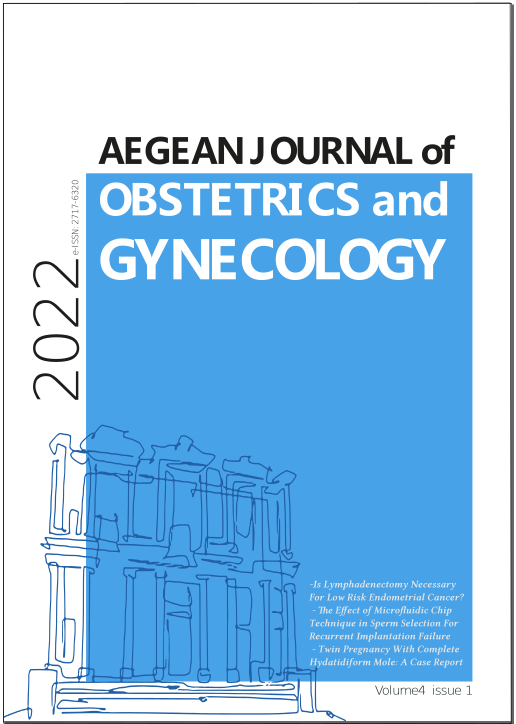The Effect of microfluidic chip technique in sperm selection for recurrent implantation failure
The Effect of microfluidic chip technique in sperm selection for recurrent implantation failure
DOI:
https://doi.org/10.46328/aejog.v4i1.100Keywords:
microfluidic chip technique, recurrent implantation failureAbstract
Abstract
Purpose: The microfluidic chip technique gives a chance to select healthy sperm with less DNA damage. In this study, we aimed to determine the effect of microfluidic techniques on sperm selection in ICSI treatment in patients with recurrent implantation failure.
Methods: We retrospectively collected data of the patients between 2017 and 2021 from a single center. We analyzed 90 unexplained RIF patients, at whom, 45 patients underwent microfluid chip technique, and 45 patients with conventional sperm selection.
Results: Pregnancy rates among the microfluidic chip technique and conventional swim up sperm selection cycles were 36% versus 34%, (p=0,4), clinical pregnancy rates (CPR) were 33% versus 31% (p=0,3) and live birth rates (LBR) were 26% versus 25% (p =0,4).
Conclusion: Our study showed that the microfluidic technique does not change CPR, and LBR during IVF treatment for couples with recurrent implantation failure.
Downloads
Published
Issue
Section
License
Copyright (c) 2022 Ferruh Acet, Volkan Emirdar

This work is licensed under a Creative Commons Attribution-NonCommercial 4.0 International License.
AEJOG is an open-access journal which means that through the internet; freely accessible, readable, downloaded, copied, distributed, printed, scanned, linked to full texts, indexed, transferred to the software as data and used for any legal purpose, without financial, legal and technical obstacles. The only authority on reproduction and distribution and the sole copyright role in this field; has been given to authors therefore they can have control over the integrity of their work, so that they are properly recognized and cited. This is in accordance with the BOAI definition of open access.
The content in Aegean Journal of Obstetrics and Gynecology (AEJOG) is protected by copyright. All copyrights of the submitted articles are transferred to the Aegean Journal of Obstetrics and Gynecology within the national and international regulations at the beginning of the evaluation process. Upon submission of their article, authors are requested to complete an assignment of copyright release form. Authors should acknowledge that they will not submit their manuscript to another journal, publish in any other language, or allow a third party to use the article without the written consent of the Aegean Journal of Obstetrics and Gynecology. When an article is published on AEJOG, it is read and reused for free as soon as it is published under a Creative Commons Attribution-NonCommercial 4.0 (CC BY NC 4.0) license. In case the article is rejected, all copyrights are given back to the authors.
The content of the article and all legal proceedings against the journal, if any, are the responsibility of the author. In addition, all financial and legal liability for the copyright of the presented tables, figures and other visual materials protected by law belongs to the authors. It is the responsibility of the corresponding author to report authors scientific contributions and responsibilities regarding the article. In case of any conflict of interest, it is the responsibility of the authors to indicate the conflict of interest in the Disclosure part of the article. Author names will be published as they are listed on the submitted Title page.




